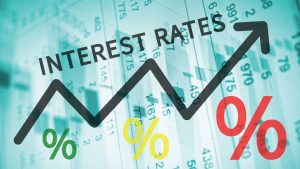Why Do Interest Rates Go Up and Down?
Whether you’re looking to buy a business, home, or land, it is difficult to wonder whether you should wait or purchase now. Most schools of thought suggest buying now while there is a loll in the market and refinancing when rates dip since home values go up as home loan rates go down. Timing the market can be tough, but with a little knowledge, you can anticipate where the rates may go. Residential loan rates go up and down due to a variety of factors, including:
- Monetary Policy: The central bank of a country, such as the Federal Reserve in the United States, can influence interest rates by adjusting the money supply and implementing monetary policy measures. When the central bank raises interest rates, it becomes more expensive for banks to borrow money, which in turn leads to higher residential interest rates.
- Economic Conditions: Rates are closely tied to the overall health of the economy. When the economy is experiencing strong growth and low unemployment, there is typically higher demand for loans, which can push interest rates up. Conversely, during periods of economic downturn or recession, interest rates tend to decrease to stimulate borrowing and spending.
- Inflation: Inflation is the rate at which the general level of prices for goods and services is rising and, in turn, eroding purchasing power. Central banks often raise interest rates to combat inflation by reducing the amount of money in circulation and making borrowing more expensive. Lower inflationary pressures can lead to lower loan rates.
- Government Policies: Government policies, such as tax incentives or subsidies for homebuyers, can influence demand for residential properties. Higher demand can lead to increased competition among buyers, which can drive up prices and subsequently push rates higher.
- Global Factors: Global economic conditions, geopolitical events, and market trends can also impact residential home loan rates. Factors such as changes in international trade policies, currency exchange rates, and investor sentiment can cause fluctuations in rates.
It’s important to note that interest rates are determined by a complex combination of these factors and can be influenced by multiple variables at any given time. The 10-year Treasury can be a great indicator and you can watch it here. You can also look at homes for sale in the Bay Area here.
Now you know!

